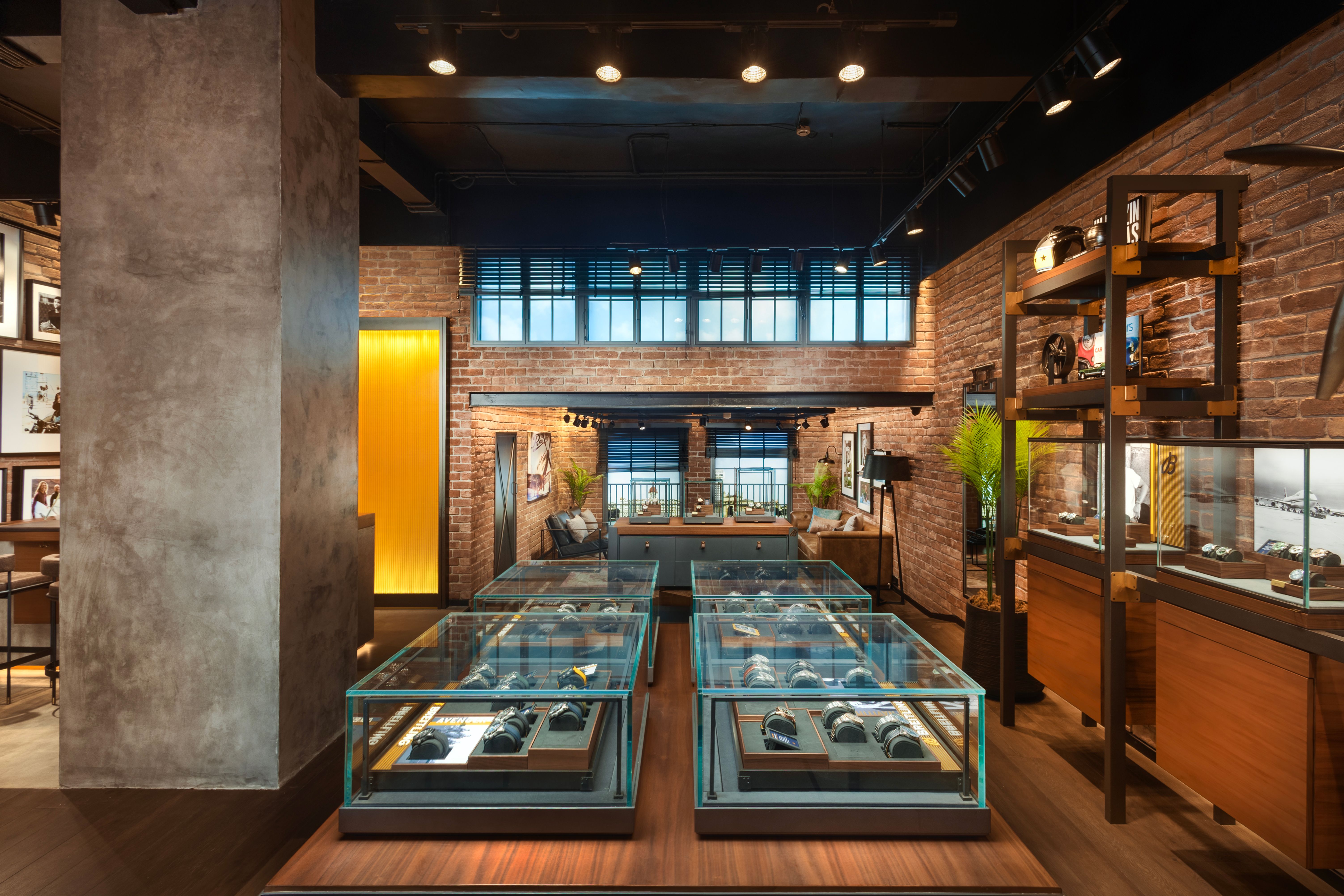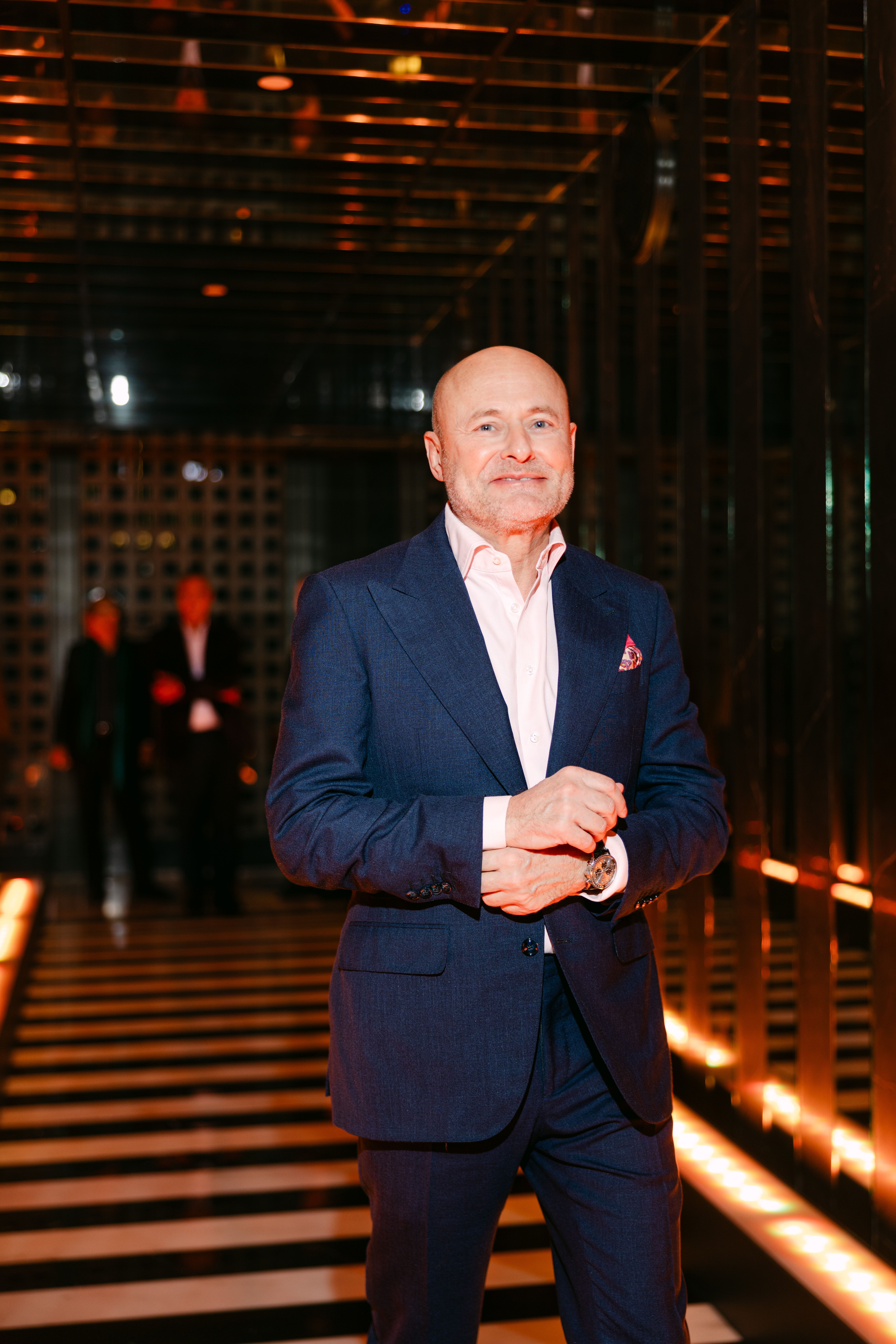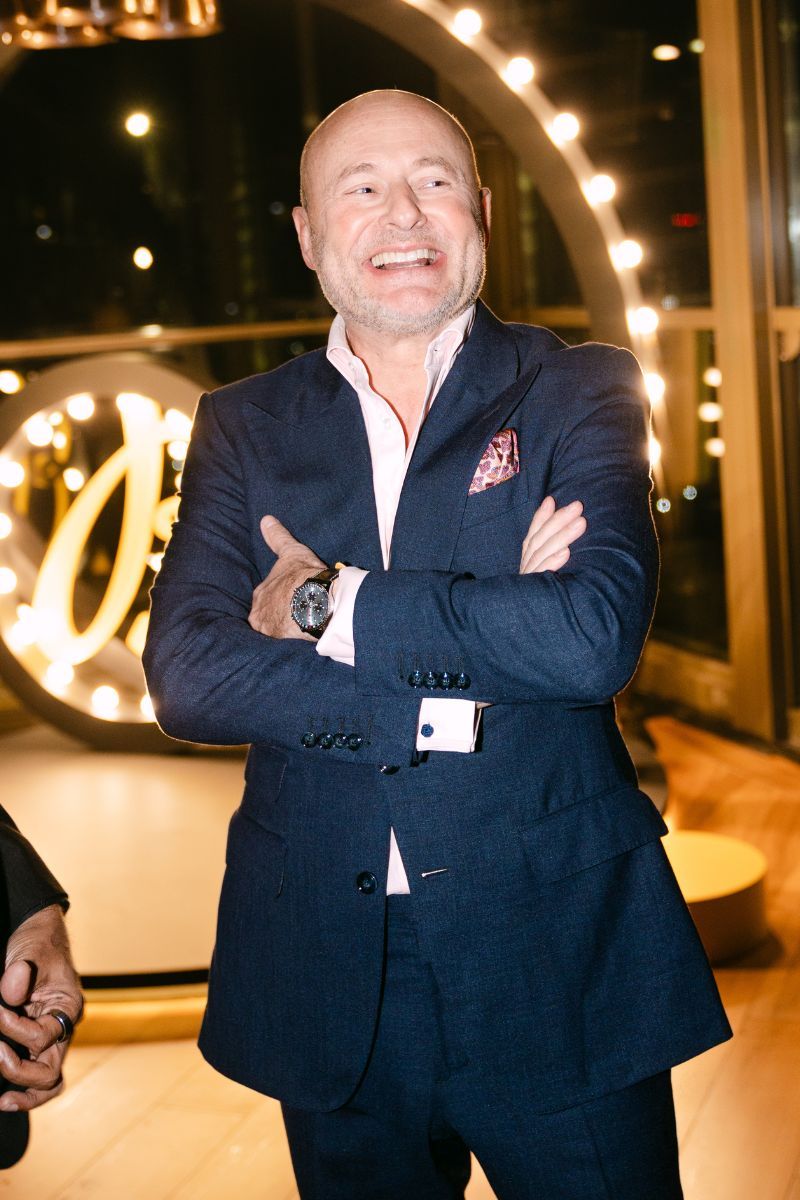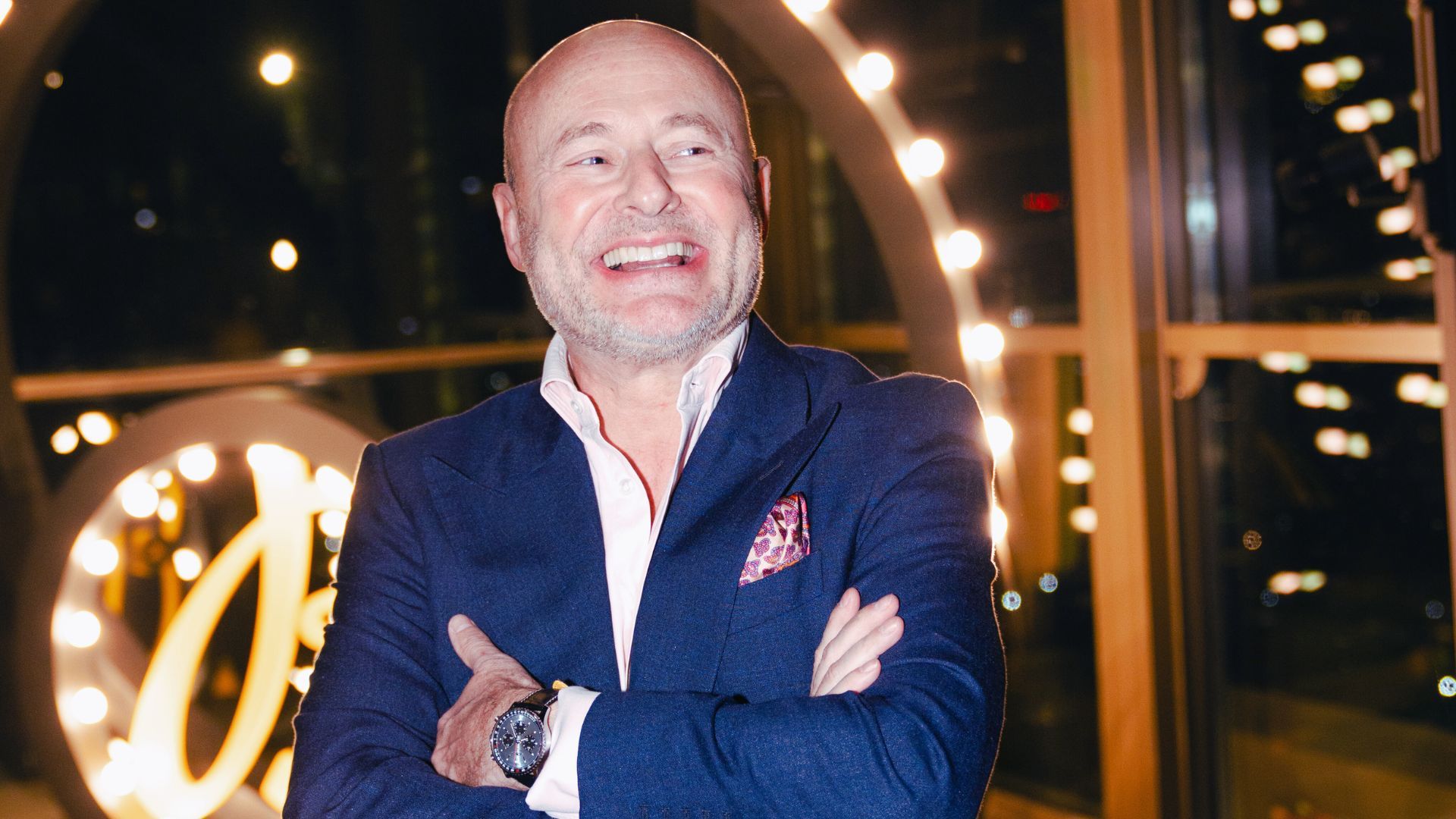When I last met Georges Kern at Geneva earlier this year, he was in bright spirits; proud of Breitling’s latest Top Time releases and reflective about how colour and inclusivity now define the brand’s design language. Six months later, we met again, this time in Mumbai, where Breitling has opened its first boutique in the city.

Located in Churchgate, the 1,300 sq ft space feels more like a clubhouse than a showroom; bar stools at the watch counter, surfboards and a Triumph motorcycle on display, and that unmistakable yellow grid wall stamped with a giant “B” framing display cases and a cosy sit-down area for customers. For Kern, it’s more than décor; it’s the physical proof of a brand philosophy he’s spent years building, via luxury that feels approachable, alive, and “happy.”
Our conversation flowed from India’s market potential to design trends, colour, culture, and the shift from the red-carpet years to what Kern now calls “intellectually inclusive” luxury. Excerpts:

What are your thoughts on Breitling's retail presence in India? It's grown quite a bit recently.
Yes, indeed. So last year we had three boutiques. We announced that we would open ten. We have seven now; we’re opening one tonight. It gives a certain maturity as a brand, a certain visibility and quality. It’s the best platform for us to talk about the brand because you have the 360-degree experience, and that’s the starting point. Obviously, it’s a gigantic country; you guys will be among the top three economic powers in the next five to ten years, which is incredible. What’s still missing is infrastructure—more streets, more development, not only for high-end luxury but overall. This is what China did for thousands of years, building roads to make sure the economy develops.
Before we dive into broader topics, I’m really excited to talk about the new Lady Premier. I think it’s a very interesting watch—elegant, kinda-Art Deco, and quite a departure from your earlier, sportier women’s pieces.
Which makes sense today. Seven or eight years ago, it wouldn’t have worked. When we started with women’s watches, we remained predominantly a men’s brand — like Bulgari will remain a women's brand even though they sell men's products. You can’t change the DNA. But seven or eight years ago we sold zero per cent; today we’re selling about twenty-five per cent to women. We started with sporty, larger ladies’ watches, and now we have width in the collections—from sporty to elegant and smaller watches. This one is very relevant for countries like India or Asia in general.
You have a 32 mm version that you said is relevant to the Asian market. Why that size?
Ergonomics. Even in men’s watches there’s a trend toward smaller sizes. We launched the Top Time this year in 38 mm, which has been a very good success, and all the brands are doing this. The market is becoming smaller in terms of watch dimensions. If you want an elegant ladies’ watch, you need a smaller size; it’s by definition smaller than a sports watch.
And what do you think about the colours? You’ve got this bold aubergine, the more subtle mint-green tones — how do those fit your vision?
We are a colourful brand. I like colours. We are a happy brand. If you look at our dials, we have mint green, ice blue, yellow in the Avenger Night Mission. Our advertising is happy. Our boutiques are happy. Our music is happy. Everything is happy. We wanted a new colour, and I think aubergine is beautiful. We have the classic grey, the classic green. It fits perfectly and gives a zest of freshness to the line.
It’s rooted in tradition, but the ideas belong to today. In a recent conversation with Wei Koh of Revolution you spoke about the red-carpet culture of the 2000s. How has that changed?
What we did ten or fifteen years ago, you cannot do now. When we started with those gigantic red carpets, we had much less social media—it was all television and classic media. Then COVID came. Some appearances are not adequate anymore; I don’t feel they’re adequate. We wanted a different appearance; surfing, motorbikes, life experiences, enjoying life in an unstable political and economic environment. When we’re in Biarritz for Wheels and Waves, people stand with their feet in the mud. It’s not red carpet with champagne; it’s different. It fits the need of people today, about freedom, breathing fresh air, enjoying life, because you don’t know what tomorrow will be. The state of mind of society has totally changed since COVID.

How has that shift reflected in you personally as a business leader?
This is why we did what we did with Breitling even before COVID. I wanted a more inclusive—at least intellectually inclusive—brand than what I was doing in my previous life. You can be exclusive by price and by distribution, but you should be intellectually inclusive. Everybody can jump on a surfboard, everybody can ride a motorbike...okay, not everybody can play golf. It doesn’t mean we’re not luxury; it means we’re closer to society than others are.
Look at American football, which we touched on in the recent NFL collab watches. It’s inclusive, it reflects community values, families, kids, women, normal people. It’s totally different from football in Europe, which is more violent and male. American football has aggressivity, strategy, speed, team spirit, but within a social context that reflects American values. For us, that’s perfect.
Breitling doesn’t seem like a brand that takes itself too seriously. Does that make it easier for people to relate?
I hope yes. We try not to be too serious; we try to be entertaining, to have a sense of humour. I make jokes...some people get them, some don’t. We want to be the cool and relaxed alternative to the very conservative watch brands out there. Look at the brands in our price bracket; they’re very conservative, and we don’t want that.
You’ve got a lot of history to draw on. If Willy Breitling walked into your office today, what would you show him first?
Two things. The 140 Stories Breitling anniversary book, because it reflects society. People don’t have long attention spans, so we didn’t want to write 360 pages. The beauty of that book is you can open it anywhere and read a story in two minutes. And I’d show him the products we relaunched from his era. He was a party guy, he enjoyed life a lot, very courageous during the Second World War. He was a crazy guy! I’d have loved to meet him. I think he would be happy because we relaunched many of his products like the Top Time. His son is very happy and proud that we’ve brought the family name back to that level. From what I’ve learned about him, I think we would have been very good colleagues.
You’ve spoken before about mentors and lessons from early in your career. What’s stayed with you?
I was lucky my whole life to have very good mentors. When I started my career at General Foods, the top CEO personally chose the trainees, which was very unusual. That CEO became a friend and followed my career for thirty years. Then I had Christian Voss, Johann Rupert at Richemont, and of course Günter Blümlein at the beginning...unfortunately, he died eighteen months after I joined. I always worked for amazing people. The worst thing for a young person is when you work for an idiot, when you know you’re better than your boss. I always had incredibly smart people guiding me, and that was a gift. Blümlein was one of them. A gentleman, very strategic, respectful of everyone. I learned a lot from him.
You’re now juggling Breitling and Universal Genève. How do you divide your attention between such different projects?
I don’t have difficulty switching. If you’re a good football player, you have to be good wherever you play—maybe in Madrid today, Barcelona tomorrow. You need to be good everywhere. If you’re a journalist, you have to be good where you are today and tomorrow at another magazine. That’s what makes you good; intellectual flexibility, the ability to differentiate brands, themes, and styles. There’s no secret.






